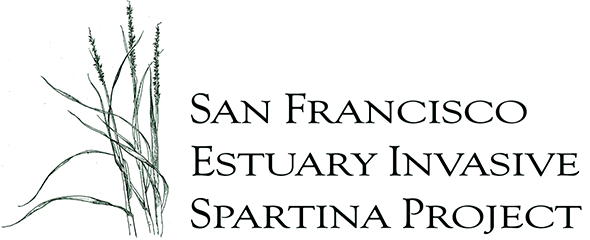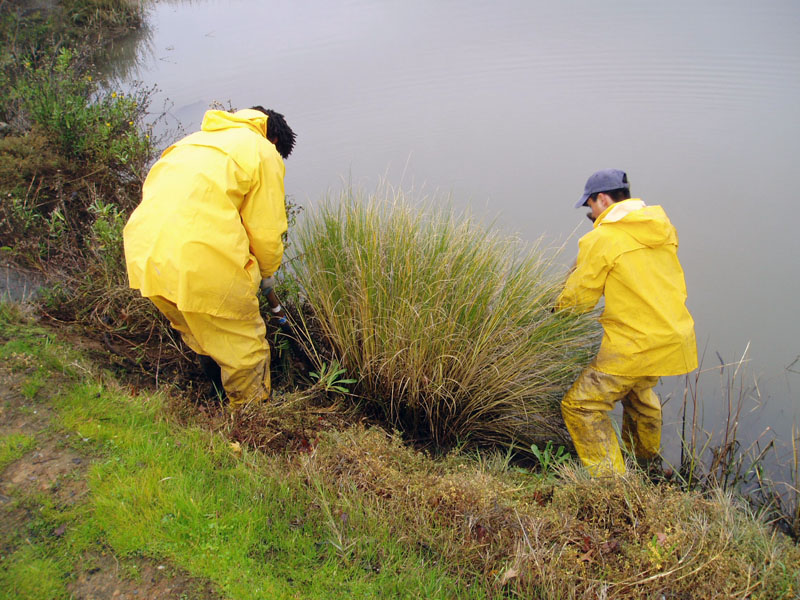
The San Francisco Estuary Invasive Spartina Project (ISP) works toward the eradication of invasive Spartina (cordgrass), protecting native tidal marshes and mudflats across the Bay Area. As temperatures and water levels rise world-wide, our efforts are helping local shoreline communities brace for the inevitable effects of climate change; marshlands provide a natural buffer for rising tides, and help filter sediments and pollutants from reaching the Bay or ocean waters. The ISP protects our tidal marshes from degradation by invasive species while facilitating landscape scale restoration to increase resiliency, benefitting native ecosystems as well as our built environment. Thank you for supporting our efforts to keep this project going!
Treatment and Monitoring:
This year, the ISP enters its 18th season of monitoring and treating invasive Spartina in the San Francisco Estuary. In late June, biologists began surveys across the 221 sites within the project’s 70,000 acres, spanning the shoreline of nine counties. Inventory surveys and mapping will continue through the fall to inform treatment or to confirm absence of the invasive plant. The number of sites with no invasive Spartina detected has been regularly increasing each year. Currently, over 25% of all historically infested sites have reached this milestone of zero detection, and another 46% contained less than 10 square meters (net cover) of invasive Spartina in 2021. With the threat from this aggressive invader greatly reduced throughout most of the Estuary’s tidal marshes and mudflats, native marshes are free to flourish, and marsh restoration projects can proceed with less risk of being corrupted.
Distinguishing between the native cordgrass, S. foliosa, and the most widespread invasive Spartina — a hybrid between the East Coast S. alterniflora and the native S. foliosa — can be tricky, even for experts. To refine field identification, the ISP team has developed a proprietary data-analysis tool that works on their hand-held tablets, nicknamed “LinDA” (short for Linear Discriminant Analysis). Its algorithm incorporates morphological measurements and genetic results from hundreds of lab samples collected for DNA analysis to provide 85% accuracy of field ID. Our team continues to collect samples on the more morphologically tricky plants for genetic testing to confirm analysis.
ISP maintains accurate maps of each non-native species’ population, with ongoing data entry in the field and processing in the office. ISP’s GIS setup is one of the most complex and highly-customized mapping and data-tracking systems in the conservation world, earning special recognition from ESRI.
Thanks to the accuracy of our mapping software and the diligence of years of work from our partners and treatment team, we can report the successful reduction of one of the target species, Spartina densiflora, to near Estuary-wide eradication. (This is the cordgrass species that is the main invader in Humboldt Bay, infesting over 2,000 acres.) Whereas this bunchgrass once infested most of the lower Corte Madera Creek watershed and formed clumps roughly the size of a compact car, our team only discovered six seedlings during 2022 surveys to date. This means that our twice-annual surveys and manual removal of S. densiflora plants has depleted the substantial seedbank and brought us near eradication of this plant from the Estuary!
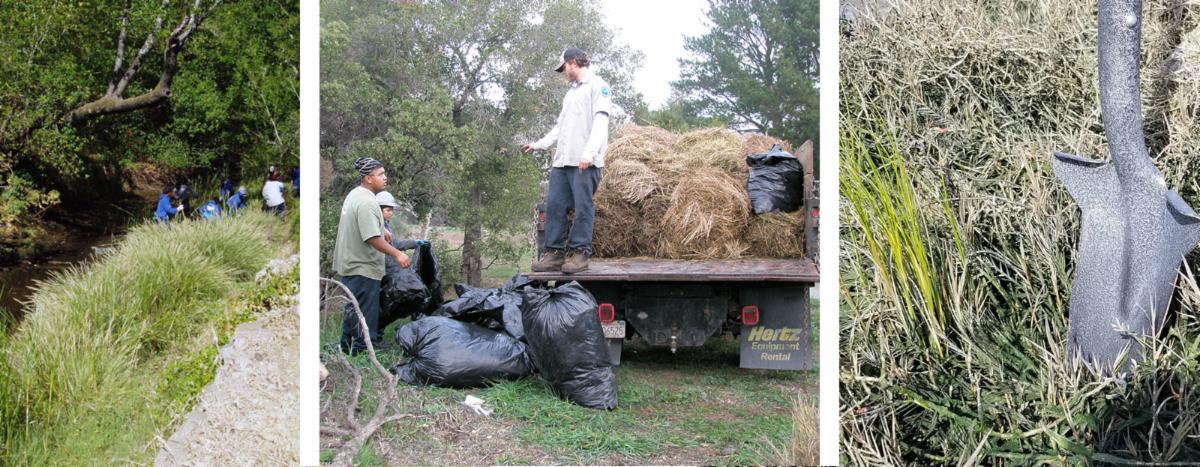
Restoration Program:
After invasive Spartina has been removed from a site, the restoration team may replant native plants to enhance wildlife habitat. At the end of January, the restoration team completed our 11th year of habitat enhancements, with more than 21,000 native plants installed at 12 restoration sites. We also installed ten high tide refuge islands at two sites, providing habitat for wildlife during high tides.
As fall approaches, the restoration team is preparing propagation beds at The Watershed Nursery, growing native cordgrass, marsh gumplant, western ragweed, and other native species. We look forward to planting another 21,000 seedlings in the upcoming fall and winter.
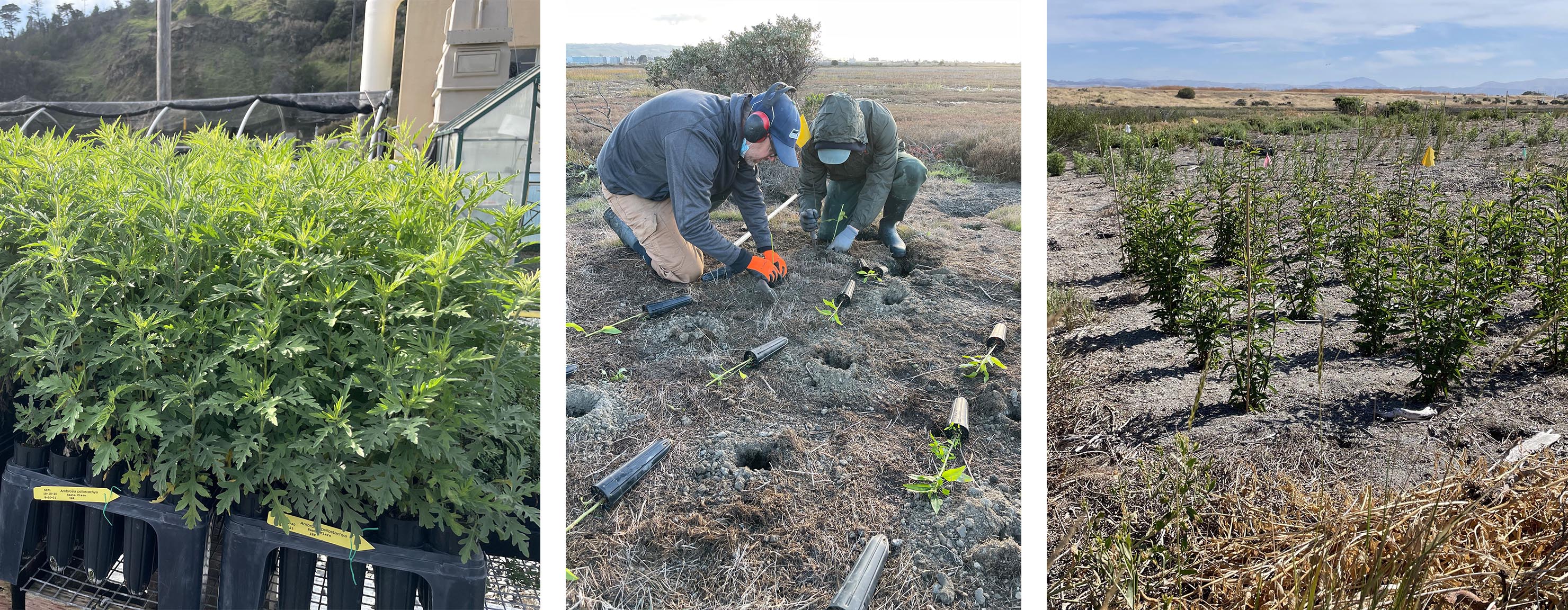
California Ridgway’s Rail Monitoring:
A crucial component of this project is providing habitat for sensitive species, including the endangered California Ridgway’s rail. In May, ISP biologists completed the 2022 rail survey season, visiting 94 sites around the Bay and detecting about 500 rails. Our team is also working with Point Blue Conservation Science researchers to compile Bay-wide data on these elusive birds. The 2022 ISP rail survey and Point Blue’s reports are expected to be completed this winter, but the 2021 season survey report is online now.
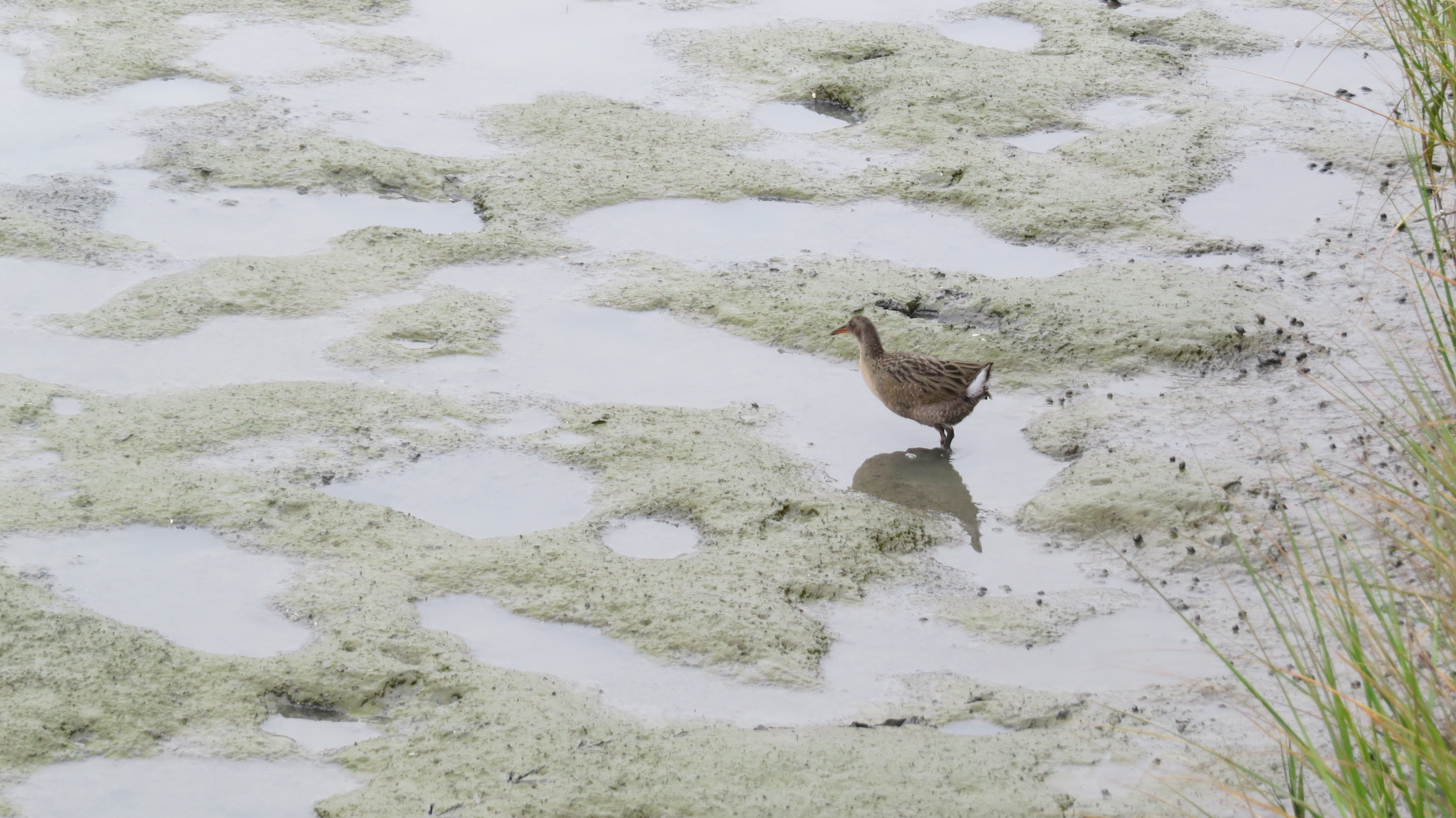
Outreach:
Our outreach team continues to share progress on the Invasive Spartina Project with local environmental organizations. On May 2, Tobias Rohmer (Olofson Environmental, Inc; ISP Monitoring Program Manager) and Lindsay Faye Domecus (Olofson Environmental, Inc; ISP Biologist) led a site visit to Arrowhead Marsh for a Merritt College horticulture class on invasive plants. On May 12, Drew Kerr (Kerr Ecological Solutions; ISP Treatment Program Manager) gave a presentation at the South Bay Salt Pond Restoration Project Science Symposium. In addition to a streamlined history of the ISP project, he gave a brief overview of two other invasive plants of concern to marshland habitat to increase awareness of these lesser-known invaders. A recording of this talk is available on the San Francisco Estuary Institute YouTube channel.
This summer, outreach staff members led a series of intensive half-day training sessions for crew leaders and supervisors at the San Jose Conservation Corps. Instructors covered a range of topics to consider when treating invasive plants, including: protecting threatened or endangered wildlife, fire ecology, tree care, and reducing the spread of pathogens.
In May, outreach staff completed our half-day training series with Oakland Civicorps at Courtland Creek park. The session covered considerations of plant management in an urban landscape and along waterways, ending with a hands-on demonstration on hand tools and safety.
Thanks to the following organizations for contributing their time and staff instructors to train the next generation of land stewards: East Bay Regional Parks District, Midpeninsula Regional Open Space District, and City of Oakland Public Works.
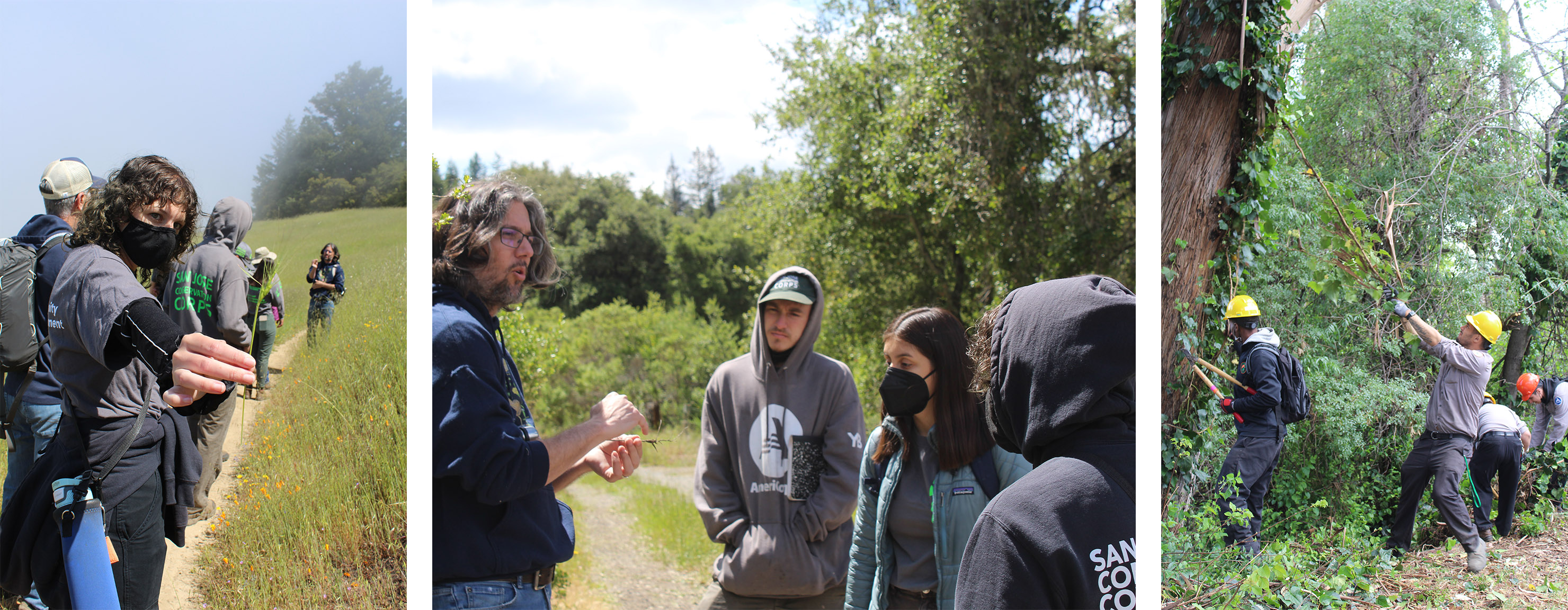
Thank you!
This work is made possible through a bay-wide collaboration of organizations. Thank you to our partners, which include the California Invasive Plant Council (Cal-IPC), Olofson Environmental, Inc., the East Bay Regional Park District, the State Coastal Conservancy, US Fish and Wildlife Service, and more than 150 on-the-ground partners and landowners.
